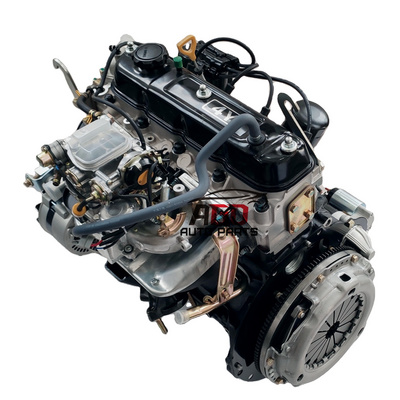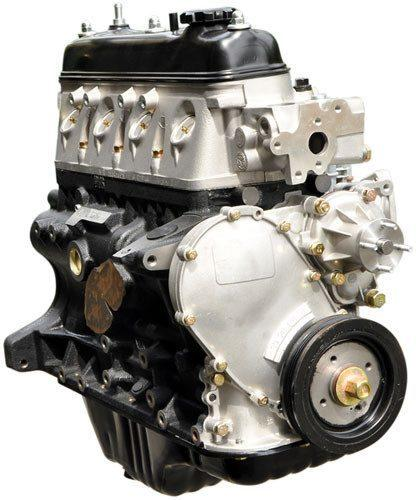Understanding the Mechanics Behind the 4Y Engine’s Power and Durability
Understanding the Mechanics Behind the 4Y Engine’s Power and Durability
Blog Article
Exploring the Different Kinds of Engine: Which One Fits Your Demands?
In the mission to establish one of the most suitable engine type for your specific demands, it is critical to examine the distinctive features and advantages of each choice offered. Interior combustion engines remain to dominate as a result of their integrity, while electrical engines are obtaining grip for their sustainability. Hybrid engines offer a functional compromise, and diesel engines attract attention for their power sought after applications. Additionally, alternative fuel engines existing cutting-edge solutions, albeit with specific limitations. Recognizing your priorities will certainly contribute in this decision-making procedure, leading to an expedition of factors that may influence your choice.

Internal Combustion Engines
Inner combustion engines (ICEs) are the foundation of contemporary transportation, powering a substantial array of vehicles from autos to planes. These engines operate on the concept of converting gas right into power through a collection of controlled surges within a combustion chamber. One of the most common sorts of ICEs include fuel engines, diesel engines, and rotating engines, each developed to fulfill details performance and performance requirements.
Fuel engines normally utilize trigger ignition, while diesel engines depend on compression ignition, leading to distinctive distinctions in fuel performance and power outcome (4y engine). Rotating engines, or Wankel engines, supply a small design and smooth operation, yet are less generally made use of in mainstream applications
ICEs have actually gone through substantial developments in innovation, consisting of the intro of turbocharging and gas shot systems, which enhance general performance and performance. Despite their effectiveness enhancements, ICEs encounter increasing examination as a result of their environmental effect, specifically relating to greenhouse gas exhausts. As the automotive industry develops, the future of ICEs continues to be a topic of argument, stabilizing performance, effectiveness, and environmental factors to consider. They continue to play an important duty in international transport infrastructure.
Electric Engines
As issues about environmental sustainability and fossil fuel dependence grow, electric engines have emerged as an engaging choice to interior combustion engines. These engines use electric motors powered by batteries or fuel cells, supplying a cleaner and extra effective ways of propulsion.
Among the key benefits of electric engines is their minimized exhausts. Unlike standard engines that shed fossil fuels, electrical engines generate absolutely no tailpipe exhausts, considerably decreasing air contamination and adding to enhanced public health. In addition, the efficiency of electrical motors usually surpasses that of internal burning engines, converting a better proportion of power from the power resource into usable power for motion.
Electric engines are additionally remarkable for their peaceful operation, making them excellent for metropolitan environments. 4y engine. The simpleness of their design leads to less moving parts, which can lead to lowered maintenance prices and enhanced integrity in time
Nonetheless, challenges continue to be, including battery manufacturing impacts, billing infrastructure, and variety constraints. Regardless of these difficulties, the growing financial investment in electric automobile innovation and renewable energy resources points toward an encouraging future for electric engines, placed to play a critical role in the shift towards lasting transportation.
Hybrid Engines
Mixing the advantages of both conventional and electrical inner combustion engines, hybrid engines represent a versatile remedy in the quest for efficient and sustainable transport. These engines incorporate a fuel or diesel engine with an electrical motor, permitting boosted fuel effectiveness and decreased emissions compared to traditional lorries.
Crossbreed engines run in several modes, using the electric motor for low-speed driving and the interior combustion engine for greater speeds or when more power is required. This dynamic procedure not just enhances gas economic climate however likewise adds to a smoother driving experience. Regenerative braking is an additional critical feature, recording power typically lost during stopping and redirecting it to reenergize the battery.

As consumers significantly prioritize eco-friendliness, hybrid engines attract attention as a sensible option, providing a reliable equilibrium of performance, performance, and environmental responsibility. This flexibility makes them appropriate for urban commuting and long-distance travel alike.
Diesel Motor
Efficiency and power are characteristics of diesel motor, which have long been favored for their robustness and gas economic climate. These engines run on the concept of you can check here compression ignition, where air is compressed to a heat before gas is injected, sparking it without the need for ignition system. This process makes it possible for diesel motor to accomplish greater thermal effectiveness contrasted to gasoline engines, converting into far better fuel mileage and lower carbon dioxide discharges.
Diesel engines are particularly appropriate for heavy-duty applications such as vehicles, buses, and commercial equipment, where torque and resilience are extremely important. Their style typically includes more powerful parts to withstand the higher pressures produced during operation, leading to longer service life and decreased upkeep costs.

Alternative Gas Engines
While diesel engines have long dominated the landscape of sturdy source of power, alternate fuel engines are gaining grip as sensible options for a more lasting future. These engines use a variety of gas, such as pressed natural gas (CNG), propane, ethanol, and hydrogen, intending to minimize greenhouse gas discharges and reliance on nonrenewable fuel sources.
One considerable advantage of different gas engines is their prospective to reduced carbon footprints. CNG engines produce less contaminants contrasted to standard diesel engines, making them suitable for metropolitan transit systems and fleets seeking to enhance air high quality. Ethanol, derived from biomass, not just lowers emissions yet also sustains agricultural economic situations.
Hydrogen fuel cells stand for an advanced growth in this world, offering zero-emission power with a chain reaction in between hydrogen and oxygen. Nevertheless, obstacles such as infrastructure advancement and manufacturing costs continue to be challenges to prevalent fostering - 4y engine.
Final Thought
Finally, choosing the appropriate engine type requires careful factor to consider of specific requirements and choices. Internal combustion engines provide dependability, while electrical engines focus on sustainability and decreased upkeep. Hybrid engines integrate the advantages of both, boosting efficiency, whereas diesel engines supply premium power and torque for heavy-duty applications. Alternative fuel engines existing environment-friendly alternatives, albeit with possible framework obstacles. Inevitably, a comprehensive assessment of driving practices and environmental worths will certainly promote an educated choice pertaining to engine option.
Crossbreed engines provide a versatile compromise, and diesel engines stand out for their power informative post in requiring applications. The most usual types of ICEs include fuel engines, diesel engines, and rotary engines, each developed to meet certain performance and performance demands.
Unlike standard engines that shed fossil fuels, electrical engines generate absolutely no tailpipe discharges, considerably decreasing air contamination and contributing to improved public health and wellness.Crossbreed engines run in a number of modes, using the electric motor for low-speed driving and the internal burning engine for greater rates or when even more power is required. Hybrid engines combine the advantages of both, boosting performance, whereas diesel engines supply remarkable power and torque for sturdy applications.
Report this page